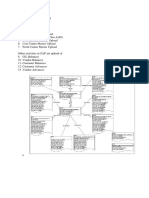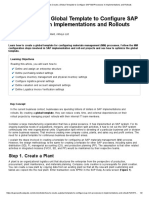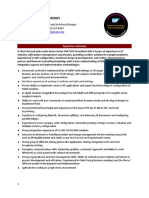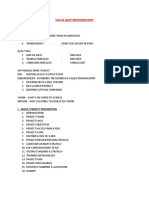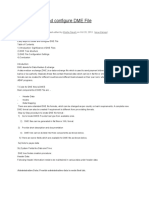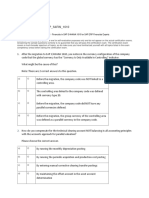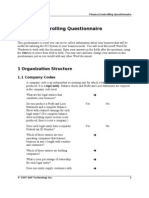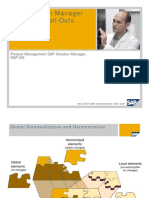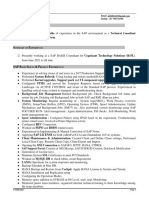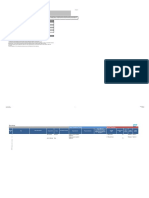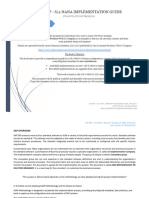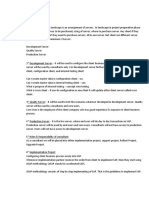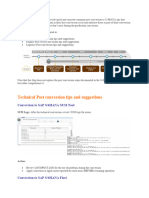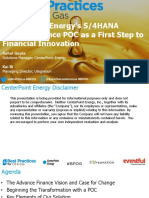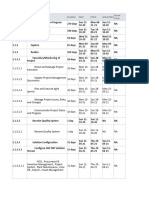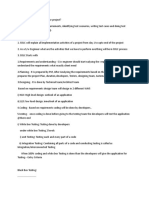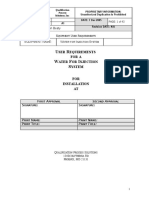ROLLOUT PROJECT
A SAP FICO rollout project involves deploying the SAP Finance (FI) and Controlling (CO)
modules in new locations or companies within an existing SAP system. A rollout is different from an
implementation, as the core system already exists, and the goal is to extend it to new business units
or regions, often with country-specific changes.
Here’s a step-by-step process for an SAP FICO rollout project:
1. Project Preparation (Initiation Phase)
Project Kickoff : Organize a meeting to introduce the project team and define project objectives,
timelines, and scope.
Rollout Strategy: Define the rollout approach, whether a Big Bang, phased, or hybrid approach.
Scope Definition: Identify which processes, business units, or countries will be included in the
rollout.
Resource Allocation: Assign roles and responsibilities to the project team, including key users,
consultants, and stakeholders.
2. Business Blueprint
Gap Analysis: Compare the existing global template with local business requirements to identify
gaps, such as legal, tax, or reporting differences.
Local Requirements Gathering: Collect specific localization requirements for the new entities,
including statutory regulations, currency handling, tax calculations, and reporting needs.
Business Process Mapping: Map out the financial processes, such as accounts payable (AP),
accounts receivable (AR), asset accounting, cost center accounting, profit center accounting, etc., to
determine how they align with the global template.
3. Configuration and Customization
Master Data Replication: Ensure that master data such as General Ledger (GL) accounts,
customer/vendor master, and cost centers are aligned with the new rollout entity's needs.
Configuration Adjustments: Adapt the system based on the country-specific localization and
statutory requirements (e.g., tax codes, reporting formats).
Global Template Adaptation: Adjust the global template to accommodate the necessary local
changes while maintaining the integrity of the overall system.
Chart of Accounts (COA): If needed, create a country-specific COA or ensure alignment with the
global COA.
�4. Development of RICEF Objects
Reports, Interfaces, Conversions, Enhancements, and Forms (RICEF): Identify any custom
developments needed (e.g., specific financial reports, tax reports, interfaces with local banks).
Technical Development: Develop and test the necessary technical objects, ensuring they are
aligned with both the global template and local requirements.
Data Migration: Plan the data migration strategy for transactional data and historical financial data
if necessary.
5. Integration Testing
Unit Testing: Test individual components of the system to ensure that all configurations work as
expected (e.g., GL postings, asset depreciation).
Integration Testing: Test end-to-end business processes, including integration between FI and CO,
and between FICO and other modules like MM (Materials Management) and SD (Sales and
Distribution).
Testing of RICEF Objects: Test reports, interfaces, conversions, and enhancements to ensure they
function properly.
User Acceptance Testing (UAT): Allow key users to validate that the system meets local and global
business requirements. UAT should include realistic scenarios based on actual business processes.
6. Training and Documentation
End-User Training: Train local users on the specific functionality of SAP FICO related to the rollout.
Focus on localized processes and changes from the global template.
Documentation: Provide detailed user manuals and process documents for local users, covering
both system functionality and business process flows.
Training on Localization: If necessary, provide specific training related to local legal requirements
and reporting procedures.
7. Cutover Planning
Cutover Strategy: Define the cutover strategy, including what data needs to be migrated, the timing
of the cutover, and any dependencies with other systems or modules.
Data Migration: Perform data migration of open items (customer/vendor invoices, assets), balances,
and master data.
Mock Cutover: Conduct a mock cutover to simulate the actual migration and identify any issues in
advance.
�8. Go-Live
Go-Live Decision: After successful UAT and mock cutover, proceed with the go-live of the rollout
entity.
Final Data Migration: Execute final data migration (open balances, transactional data) before
switching over to the live system.
System Monitoring: Closely monitor the system for any issues during the initial post-go-live period.
Hypercare Support: Provide support during the first few weeks to resolve any issues that arise,
ensuring smooth functioning of financial processes.
9. Post-Go-Live Support
Issue Resolution: Address any system or process-related issues that emerge after go-live.
Process Optimization: Optimize business processes based on user feedback and any observed
inefficiencies during the initial phase of live operations.
Continuous Improvement: Implement minor enhancements as needed, especially related to
localization requirements.
10. Project Closure
Project Review: Conduct a final project review meeting to assess what went well and areas for
improvement.
Documentation: Finalize all project documentation, including lessons learned and system
documentation.
Formal Handover: Handover the system to the support team for ongoing maintenance and support.
Key Considerations:
Localization Requirement: Ensure that the rollout takes into account any country-specific legal, tax,
and reporting requirements.
Change Management: Address any resistance from local users and ensure a smooth transition by
managing expectations and providing adequate training.
Data Consistency: Ensure the global template is followed closely for consistency while adapting to
local needs without compromising overall system integrity.
This structured approach ensures that the rollout is aligned with both global and local needs,
minimizes disruptions, and allows for smooth integration of new entities into the SAP system.





